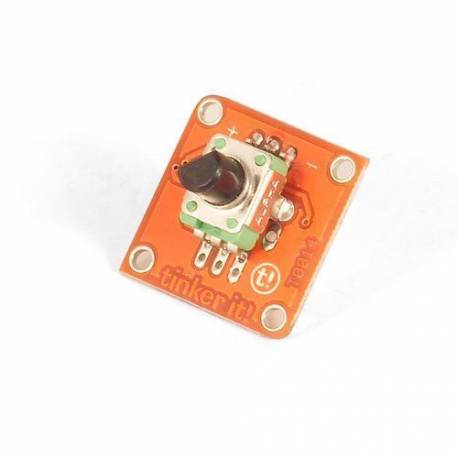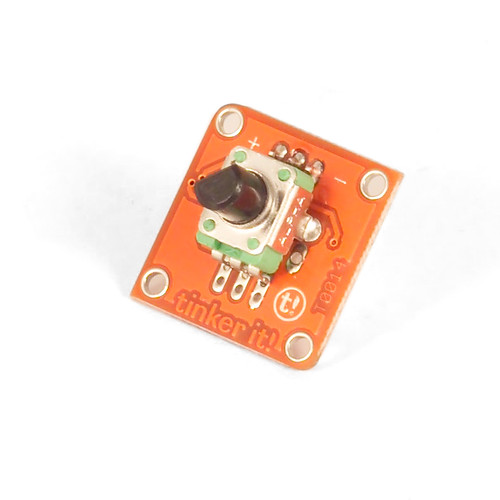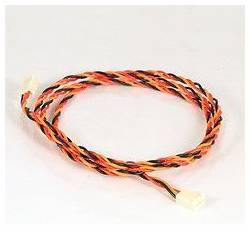 Agrandir l'image
Agrandir l'image Module TinkerKit Potentiomètre Rotatif
T000140
Nouveau produit
Module Tinkerkit d'Arduino avec un potentiomètre rotatif permettant d'obtenir une résistance variable en tournant son axe.
Aucun point de fidélité pour ce produit.
En savoir plus
Module TinkerKit Potentiomètre Rotatif
Introduction
Un Potentiomètre est communément utilisé comme une résistance variable. Tourner le bouton permet de faire varier la tension de sortie de 0 à 5V. Cette valeur est envoyé au travers de la pin centrale du potentiomètre.
Sortie: Ce module fournit du 5V quand il tourne dans une direction et 0V dans l'autre. Lorsque le module est connecté à une entrée de l'Arduino par l'intermédiaire de la carte d'extension Tinkerkit, vous pouvez vous attendre à récupérer une valeur entre 0 et 1023.
Description du Module
Ce module comprend une resistance variable de 4k7 Ohm, un amplificateur de signal un connecteur 3 points Tinkerkit standard, une LED verte pour signaler que le module est correctement alimenté et une LED jaune dont la luminosité varie en fonction de la position du potentioomètre.
Ce module est un CAPTEUR. Le connecteur est une SORTIE (OUTPUT) qui doit être branché à un connecteur d'ENTREE (INPUT) de la TinkerKit Shield.
NB: Le module est livré sans câble.

Exemple de Code
/*
Analog input, analog output, serial output
Reads an analog input pin, and T000140 Rotary Potetiometer Analog Sensor connected to I0, maps the result to a range from 0 to 255
and uses the result to set the pulsewidth modulation (PWM) on a T010111 LED Module connected on O0.
Also prints the results to the serial monitor.
created 29 Dec. 2008
Modified 4 Sep 2010
by Tom Igoe
modified 7 dec 2010
by Davide Gomba
This example code is in the public domain.
*/
#define O0 11
#define O1 10
#define O2 9
#define O3 6
#define O4 5
#define O5 3
#define I0 A0
#define I1 A1
#define I2 A2
#define I3 A3
#define I4 A4
#define I5 A5
// These constants won't change. They're used to give names
// to the pins used:
const int analogInPin = I0; // Analog input pin that the Pot is attached to
const int analogOutPin= O0; // Analog output pin that the LED is attached to
int sensorValue = 0; // value read from the pot
int outputValue = 0; // value output to the PWM (analog out)
void setup() {
// initialize serial communications at 9600 bps:
Serial.begin(9600);
}
void loop() {
// read the analog in value:
sensorValue = analogRead(analogInPin);
// map it to the range of the analog out:
outputValue = map(sensorValue, 0, 1023, 0, 255);
// change the analog out value:
analogWrite(analogOutPin, outputValue);
// print the results to the serial monitor:
Serial.print("sensor = " );
Serial.print(sensorValue);
Serial.print("t output = ");
Serial.println(outputValue);
// wait 10 milliseconds before the next loop
// for the analog-to-digital converter to settle
// after the last reading:
delay(10);
}
Avis
Aucun avis n'a été publié pour le moment.
Accessoires





